Something about autumn triggers an innate need to bake something, anything. Combine that with apple season and the internets are bursting with apple baked goods. The most quintessential of all apple baked goods is apple pie. We decided to take a more free form approach and make an apple galette, which is essentially a pie baked on a baking instead of a pie pan. The advantages of a galette over a pie are that it is easier to transfer the pie dough to a baking sheet compared to a pie pan, and it is easier to serve and most importantly to eat (kinda like pizza).
We decided to make Jacques Pepin’s country Country Apple Galette. We liked the simplicity of the filling, just apples, sugar, honey, and cinnamon. It allows the flavor of the apples to shine. However his recipe calls for making the dough in a food processor, and that just did not sit right with us. I know if a food processor is good enough for Jacques, it should be good enough for us amateurs. However, the lure of the food processor pie crust is not all it’s cracked up to be. When you use a food processor, it’s much easier to over incorporate the fat into the flour; I know this from past crust fails. That being said, handmade pie dough does not have a reputation for being easy to make either. There is the still the danger of over working the dough and letting the fat warm up. We looked at a few different crust recipes and ultimately decided to use Bon Appétit’s Flakiest Pie Crust. The method is described as “foolproof” and a “blow your-mind technique for the best damn all-butter crust”. We were sold. It is, to date my best pie crust making experience. However, we did have to put it back into the fridge mid rolling out, but that could also have to do with the fact that we had to pause for a few pictures. Also, it was pretty fun to work the butter into the dry ingredients with our hands.
Speaking of butter…I just want to say butter is simply the best. It is fundamental to baking and makes everything taste better. For greater exposition on this, I defer to the kitchn. Butter also reminds me of my Papa; he was repulsed by it. Just the sight of it would cause him to make some remark and/or facial expression of disgust. We grandchildren would taunt him by slathering butter on our corn on the cob say, “Oh Papa, doesn’t this look sooooo good? Do you want us to pass the butter?” But that was all in good fun and he knew it. We made sure any dish we prepared for him was butter free. If we tried to deceive him and the truth was found out, he would have never trusted us to cook the offending dish or anything that could possibly have butter, for him ever again. Recently my Grams confided in me that in later years she would sometimes sneak butter in her cooking and baking. And my Papa would remark that the food tasted really good, better than he remembered. Butter does really make everything taste better.
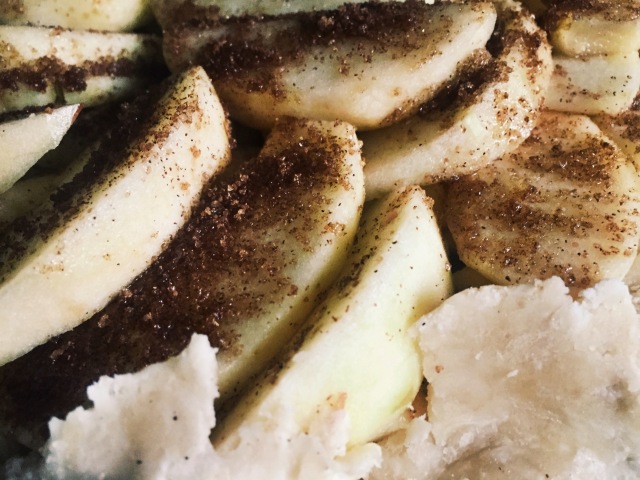 As far the apples go, we veered slightly from the original recipe and used two golden delicious apples and two honey crisp apples, the recipe calls for four golden delicious apples. Both are great for baking (and just plain snacking) because of their firm texture and sweetness. One of the great things about autumn in Michigan is that fresh, local apples are readily available.
As far the apples go, we veered slightly from the original recipe and used two golden delicious apples and two honey crisp apples, the recipe calls for four golden delicious apples. Both are great for baking (and just plain snacking) because of their firm texture and sweetness. One of the great things about autumn in Michigan is that fresh, local apples are readily available.
On the whole, our recipe mash up yielded a delicious galette. However, when making this again we would tweak a few things, primarily the quantity of dough used. The crust recipe we used is for a double crust and we used half the dough, a single crust. However, it wasn’t quite large enough to accommodate the full four apples called for in the galette recipe (though the apples we used were on the large side). When the two crust recipes are compared, it is clear that a single crust isn’t quite enough. Even though we didn’t use all the apples, we still slightly over filled our galette; which resulted in some of the apples on the top getting dried out. Despite it’s short comings, our galette was a huge hit and was quickly devoured. Not too shabby for our first attempt.
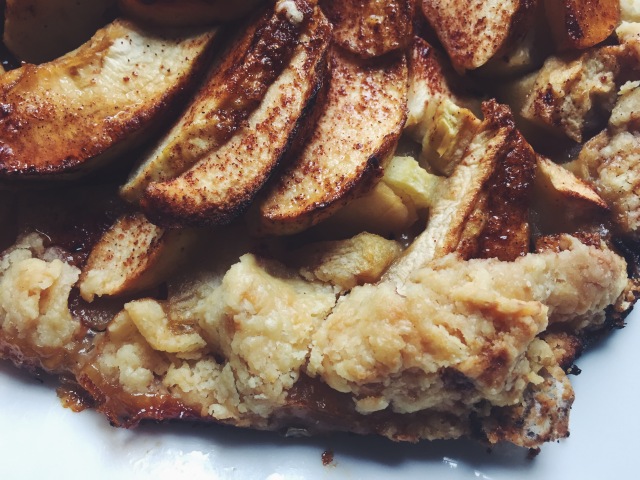
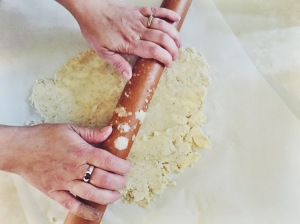
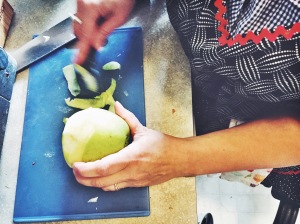
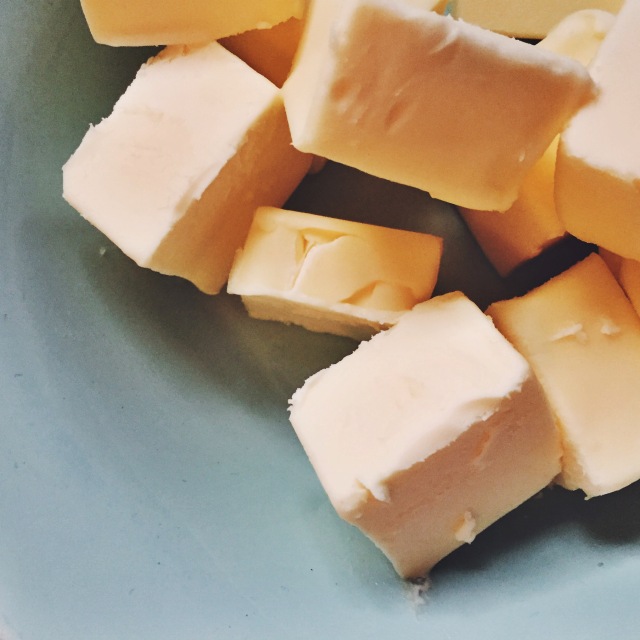
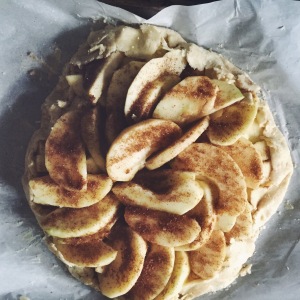
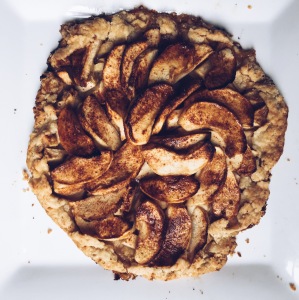

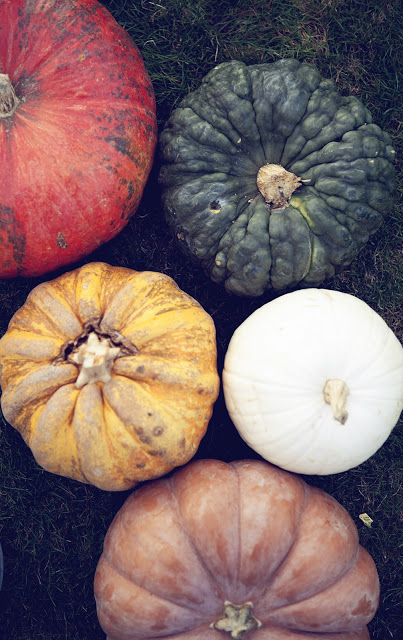
 i think i’m gonna bake
i think i’m gonna bake 




